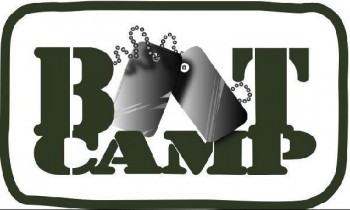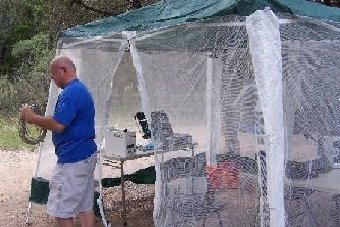 SITE SURVEY – An Important Detail For Longer-Term (over a day) Emergency Communications Deployment
SITE SURVEY – An Important Detail For Longer-Term (over a day) Emergency Communications Deployment
TAUGHT AS PART OF OUR “JUMP TEAM BOOT CAMP” session by Bob W2IK
How and where you erect any operating, sleeping and cooking structures is very important. This also includes areas for erecting any antennas. This is why when you get to a location and decide upon a general area, you first must do a site survey. This is especially true if your team does a full-scale tent deployment and not a deployment using existing free-standing buildings. One of the most important things to consider is: Will this emergency intensify, such as will there be additional rains or wind in the short-term future while you are deployed? Even if you do choose to use an existing building, you need to do site survey.
 Threat Assessment –
Threat Assessment –
- Will there be drainage for additional rains or will your operation be flooded out or will you have to sleep in soaked sleeping bags like I had to do once in the 1980s in the Virgin Islands because the team leader decided on the wrong area for placement of the communications team?
- An existing building may become flooded or cut off from access or evacuation.
- A road to any building may become a river that will flood out any building when you least expect it.
- Always choose an area which is on higher ground than the surrounding plain and NOT near any stream or river or their associated flood plains. You can usually tell about where the flood plain is by observation. Along streams there will be what’s known as a “debris line”. On flat terrain, this could be hundreds of yards from the stream itself. This is the highest area that has been recently flooded. Stay FAR AWAY from any debris line, as the emergency you might be deploying for, will have greater flooding potential than the average heavy rain.
- Areas near a dry creek bed should be avoided because a dry creek bed can be flash-flooded and you along with it. I have seen one of these creek beds flood out to a half-mile wide river in a matter of minutes. High winds can cause trees to come crashing down when already saturated roots give way so keep away from large trees. Yes, they may make handsome places to string up an antenna, but at what cost?
- If there is a threat of wildfires, will you be far enough away so that evacuation of your communications site will not be needed? I actually had to evacuate a site because the wind changed direction and the wildfire, with flames over 100 feet tall, ended up engulfing the communications spot we were given.
- If you find yourself deploying during a winter storm, will your area be smothered in snow drifts or will you be in the clear?
- Look at the ground for prints of any animals which might cause problems should they wander into your camp. I have had deer eat antenna coax in the middle of the night. Interlopers such as bears, mountain lions, skunks, etc., should also be looked out for.
- Keep away from any dump areas where trash may accumulate as this kind of stuff invites unwelcome visitors.
- Also keep away from piles of branches or timbers (and debris lines) because you never know what may be living in them. Snakes, spiders and scorpions like to live in those areas.
- I always like to rake out the chosen area first, so I can see if there are things such as fire-ant mounds. If there are, re-locate to another area. You can’t do a 100% kill of fire ant mounds overnight.
Effective Site Layout – When I do a site survey, I do what our ancestors did: Ring your communications compound (your tents) like a wagon train. That will make short routes to any structure, but make sure each tent’s openings face the inside of the circle. You also do this for safety reasons. Everyone can watch every structure and in doing so will keep non-essential people (or animals) away.
Noise Abatement – Keep the communications tent away from the sleeping quarters with any speakers pointed away from the center of the compound so the sound of the radios do not keep resting ops awake. It is best to sketch out a diagram of where each structure will be located before site construction begins.
*******************************
The next post in this series will be: What is “Protein Depravation” and “Food Fatigue” ?
I will explain what they are and how to avoid them when you are deployed.
Bob, W2IK

April 20th, 2014 at 6:42 PM
Hey Bob! IF you still have your Jump Team workbooks available, I would be interested in purchasing one!